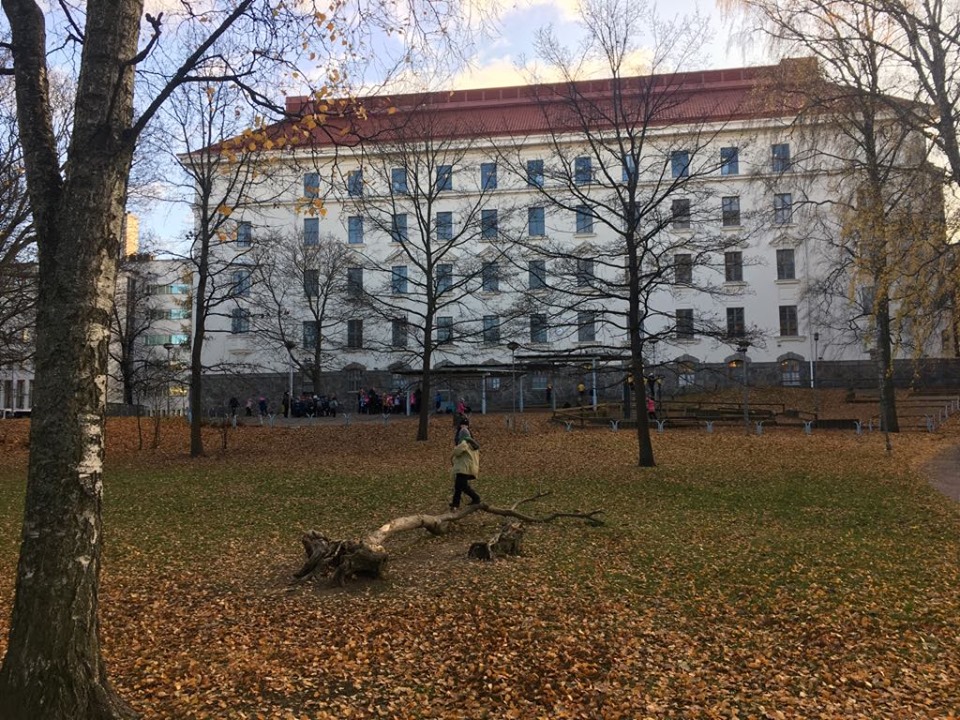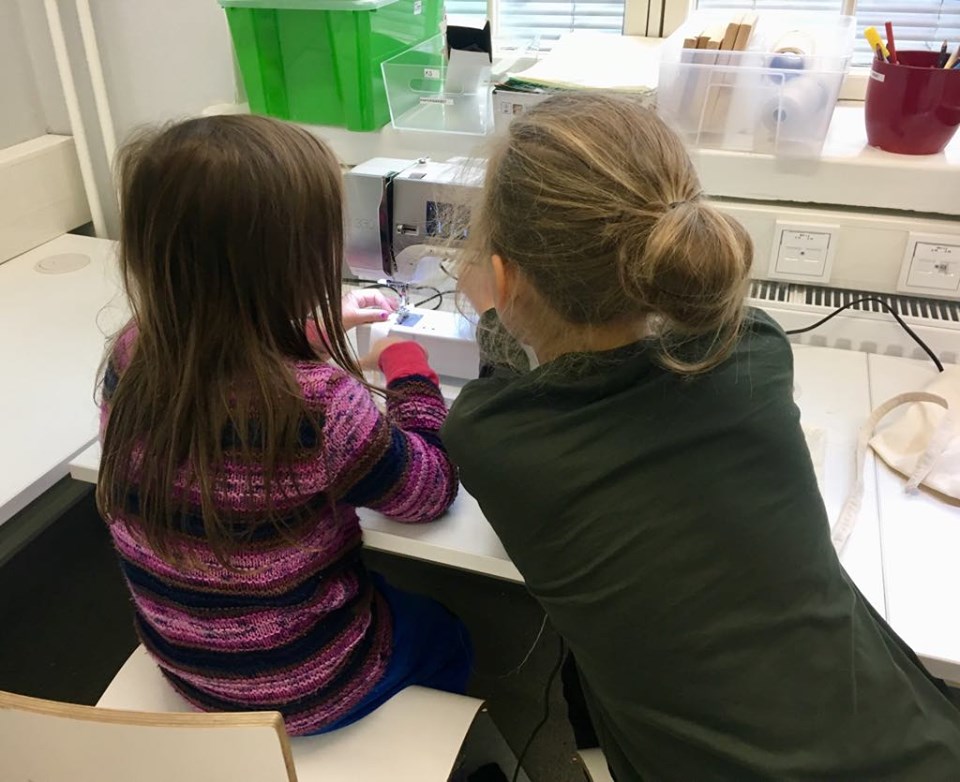The Finnish education system is currently THE most admired global model. Given the number of teachers, education specialists and even elected officials claiming to be inspired by it, we are entitled to wonder if it would not be just easier to import it directly in order to apply it in all our schools for the well-being of our children. After all, this model has proven itself! But would it be possible? Could it be applicable everywhere? This is what we will try to discover together today. But first, let’s paint a picture of the situation.

The major assets of Finland
In recent years, Finland has achieved extraordinary results in PISA studies. It was, moreover, this meteoric increase in their results that first attracted the attention of international media and education specialists. But where the results are even more spectacular, it is in the number of graduates. Here, between 97% and 99% of 17-year-olds successfully complete their secondary education. When in 2011 the rate dropped to 95%, the country’s education ministry automatically addressed the issue and steps were taken to find solutions. In Finland, education is genuinely a priority of the government, and the population would not accept less of them. By way of comparison, in Quebec, the most recent figures made public show a graduation rate of 76.4%.
But, we must not hide it, in addition to making education a national priority, Finland has some advantages in its sleeve. First, Finnish is a so-called transparent language, which means that you write what you hear and vice versa. It is therefore much easier for children to learn to read and write it than for French or English, which are opaque languages. As an example, let’s take the word ” TAXI ” which has the same pronunciation in both languages. In English or French we will write TAXI even if the ” x ” is pronounced rather ” ks ” while in Finnish it will be TAKSI. This direct link between the sounds heard and the writing greatly facilitates children’s learning. And since reading and writing is one of the fundamental bases for access to knowledge, Finnish students are already one step ahead of those whose mother tongue is opaque.
Another recognized asset of Finland, in terms of education, is the very low immigration rate. In 2011, only 3.4% of the country’s population was not born in Finland, and of this number, the majority came from neighboring countries, Russia and Estonia. By comparison, in the 2011 census, immigrants made up 20.6% of the Canadian population. This state of affairs makes the Finnish population very homogeneous: their origins, social status, values and even family income, varying little. It is therefore much easier to establish programs which will correspond to the cultural realities of all children in this context.

Management of the sums allocated to education
According to the World Bank, Finland spent 6.9% of its GDP (gross domestic product) on education in 2016. According to Statistics Canada, in 2014, it was on average 6% of their GDP that the Canadian provinces had invested in this sector. Although superior, this investment is not so great as to explain such a difference in results. It is above all the way in which this money is managed which provides explanations. Indeed, here, it is each school, in concert with its municipality, which decides how it will spend the allocated funds. The budget will therefore be distributed according to the real needs of the school and its students, and not according to government decisions. On the other hand, spending ranges are compulsory for all, but the budget allocated by the state takes this into account. Education in Finland is completely free from primary to university. This free education includes teaching, textbooks, teaching materials, equipment, and even, in the case of primary and secondary, lunch.
This internal management brings another reality. Here, the school administration hires the teachers and not a school board or a group outside the school. The administration is therefore able to choose teachers who correspond to the school’s vision and its objectives. Because in Finland, although the ministry determines the content of the educational program, teachers and schools have great pedagogical freedom. They are considered to be in the best position to guide their students and find solutions to help them progress. It is therefore not uncommon to see in the same class, learning tools from several different pedagogies allowing children to achieve the objectives set by using the material or techniques that suit them best.
Teacher training
Since we are talking about teachers, what about their training? You must first know that in Finland, no matter what level you teach, you must at least have a master’s degree in your pocket. Although the average salary is lower than that of doctors or lawyers, teachers are highly valued and enjoy a prestige comparable to that of these professions. It is therefore a very attractive job for young people and many are trying to pass the entrance exam at the end of their BAC (19 years old). It is therefore possible, for teaching faculties, to choose only the best candidates. In fact, only around 15% of them will have the chance to be admitted to this program, of which 95% will obtain their master’s degree in “educational sciences”. Many will then choose to pursue a doctorate.
To teach in Finland, primary school teachers must follow a program leading to the title of generalist teacher, and secondary school teachers will have to specialize in one or two subjects. In all cases, the training offered aims to create a common professional culture between elementary and secondary teachers, in order to ensure continuous follow-up with the students.
The training lasts 5 years in total. 3 years of core curriculum, then two years of specialization depending on your choice (primary or secondary). As everywhere else, the students have courses in pedagogy, childhood psychology and methodology, but the training insists on two points that make all the difference:
- Students are encouraged to focus their research on ” how to learn to learn ” and on different techniques, all pedagogies combined, which can support different types of learning for children. This is what is the priority in teaching here. Allow children to learn how to learn.
- At the same time, from the first year, future teachers are trained to diagnose students with learning difficulties and to adapt their teaching to these realities.
To obtain their master’s degree, students in the education sciences will have to present a final dissertation based on this research and on the didactic contributions they will make.
Once their diploma in hand and a job obtained, continuing education will be part of their reality for the whole of their professional life. Although government requirements in terms of continuing education are standard (1 to 5 day (s) per year), many schools demand more from their teachers. And anyway, in Finland, continuing education is valued. It is paid at the same rate as teaching hours, can be done during regular working hours and is provided by a large number of training centers all benefiting from public funds, which considerably increases the course offer and its variety. In addition, the state encourages training based on the teacher’s will (therefore in addition to his compulsory annual days), by offering specific scholarships. On the other hand, the willingness of teachers to train is such that they sometimes have to wait a few years before being entitled to it. Many will therefore choose to pay for these training courses out of their own pocket.
To be qualified, continuing education must focus on future skills, such as learning to learn, interaction skills, critical thinking and the use of technology.

The success of the Finnish education system: prevention
For a large number of educational specialists, both in Finland and elsewhere in the world, the key element ensuring the success of this system is prevention. Here, as soon as a student’s results decrease, there is a reaction from the school. Teachers consult each other (2 to 3 hours of meetings per week are also included in the teachers timetable in Finland), an appointment is made with the parents and, if necessary, the intervention of the school is requested. In Finland, getting help during school is not seen as a shame, but as an opportunity. In fact, almost all children will benefit from it at some point in their schooling.
To enable children to learn in the best possible conditions, a series of measures have been taken. It has already been mentioned that the midday meal is free for all in order to ensure the quality of children’s food in order to improve their ability to concentrate as much as possible. But other measures have been taken. For example, at the end of each 45-minute lesson period, elementary school children have a break to spend their time outside. And timetables are 25% less busy than those of children in other European and North American countries. In addition, the school begins at 7 years old, not before, in order, among other things, not to require from a child who is in the middle of a period of development of his gross motor skills, long periods of immobility. Finally, the private school was abolished in the 1970s in order to guarantee equal opportunities for all Finns. A principle that is particularly close to their hearts.
Homework, exams and grades
One of the debates raging in Quebec, as elsewhere in the world, is the relevance of homework and lessons, exams and grades. What about in Finland?
Regarding homework and lessons, there are, but not in excess. As the school days are short (sometimes only 3 hours), the teachers consider it relevant to summarize the knowledge acquired at home. In addition, this way of doing things allows parents to follow the development of their children and since teamwork in relation to learning is considered essential in Finland, it is seen as a positive tool.
Compared to the exams, and therefore to the grades, yes, there are (few in elementary school, but still). By cons, unlike us where the result is a purpose and a judgment, here, it is seen as a tool allowing students and teachers to know where the child is in his learning and to target the areas to work. The exam can always be taken again later when the subject has been acquired.
And although it happens, in very specific situations, that a child has to start over a year, these situations are very rare.

So, is the Finnish educational program applicable everywhere?
You will no doubt have understood by reading this text, to be able to apply the Finnish system as it is in a country like ours, we would first have to make a drastic change in our vision vis-à-vis education. We should totally change our relationship with teachers, trust them, give them great autonomy of action and allow them to integrate into their teaching style, all the tools they deem necessary to obtain the objectives set without that the government does not come to impose or ban methods. We should give them the support of specialists, allow them to work in a team (and this, without fear of being judged by their peers and by parents), to develop a real bond between parents and teachers and to stop considering as a failure to seek help when necessary.
We would have to completely review our way of managing the budget allocated to education and grant much more freedom to schools, among other things, in the hiring of its teachers. And the Ministry of Education should be ready to focus quickly and immediately on the problems encountered in order to find solutions, in collaboration with teachers and schools, as soon as a difficulty arises.
The teacher training program should also be thoroughly reviewed, emphasizing the importance of learning to learn, the identification of pupils with difficulties and how to work with them.
It would be necessary to learn to trust children and to stop praising certain matters to the detriment of others. In Finland it is considered that all subjects have the same importance and that, although some basic learning is necessary (such as reading and writing and basic mathematics), it is imperative to leave the child free to choose what he wants to learn judging that he can always learn later what he will miss to do the job he wants. He will then have a motivation to do so and will learn much faster.
And finally, we should completely change our daily routine and the place we give to our family in it, and demand that the whole society adapt to this new reality. As the days are much shorter in Finnish schools, the same goes for the presence of children in school. School daycare services (like daycare services for children under the age of 7) are mostly only open from 8 a.m. to 5 p.m., but, as a friend who lives in Finland explained to me, it is frowned upon to pick up your child after 4:30 p.m. since, after this time, he will not have enough quality time with his parents. Our society should therefore put its children back at the heart of its concerns.
These changes seem difficult to me to make in the world in which we live today. But I remain convinced that it is by educating, by demanding the changes we want and by opening up to other possibilities that we will get there. And you, do you think that the Finnish model would be applicable in Quebec? Would you like it to be?